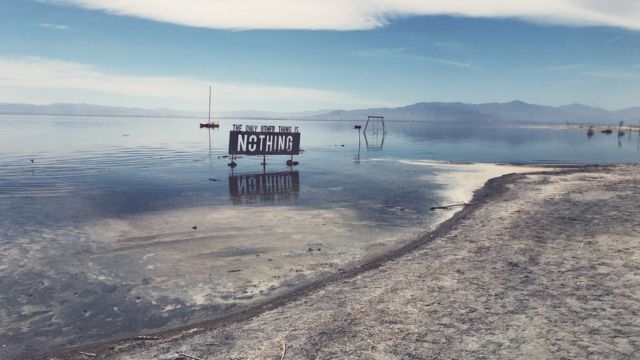Nestled in a secluded corner of the California desert, Bombay Beach might not be the first place you’d expect to find a flourishing hub of avant-garde art, but this tiny, half-forgotten town has transformed into an extraordinary canvas for expression.
Renowned for its unusual blend of street theater, classical opera, and ambitious public art installations, Bombay Beach along the Salton Sea’s eastern shore challenges the conventional, emerging as a vibrant testament to the power of renegade art and unbridled creativity.
Once a year, this seemingly desolate community awakens to a three-day spectacle dedicated to celebrating art, music, and philosophy, simultaneously shining a light on the pressing environmental issues afflicting the Salton Sea. The festival, concluding its latest iteration on March 24, encapsulated an eclectic mix of performances ranging from circus spectacles and musical theater to conceptual art pieces and profound philosophical discourses, including the enchantingly peculiar “surrealist peep show.”
This vibrant festival owes its inception to three visionary friends and part-time residents: Tao Ruspoli, a filmmaker and artist; Stefan Ashkenazy, a hotelier known for his immersive art projects; and Lily Johnson White, a philanthropist deeply invested in the arts.
Their combined efforts and resources laid the groundwork for what would become the first Bombay Beach Biennale in 2016, drawing inspiration from the iconic Venice Biennale yet reimagined within the unique setting of Bombay Beach.
Ashkenazy envisioned the festival as an opportunity to transcend traditional confines of artistic expression, allowing creativity to permeate the entire town. This initiative aimed to bend reality, offering experiences that defied ordinary expectations. White highlighted the festival’s role as an “incubation space,” empowering artists to pursue ambitious projects without the constraints typically imposed by commercial galleries or museums.
The Biennale has since garnered attention and acclaim, earning descriptors like “a bohemian dream” and the “anti-Burning Man” for its commitment to preserving the integrity and intimacy of artistic expression against the backdrop of commercialization.
The festival remains deliberately small, fostering a sense of community and exclusivity through its word-of-mouth nature and secretive scheduling, ensuring participation remains rooted in genuine connections to the town and its ethos.
Yet, as the Biennale approaches a decade of desert gatherings, its founders express concerns over its growing popularity. The delicate balance between welcoming creativity and preserving the community’s integrity remains paramount.
Ruspoli stresses the importance of maintaining the Biennale’s unique charm and unpredictability, wary of losing the essence that attracts individuals driven by creativity and the desire for surprise.
Bombay Beach Biennale stands as a beacon of creativity, challenging artists and attendees alike to reimagine the boundaries of artistic expression. In a world where commercial interests increasingly dominate the art scene, the Biennale offers a refreshing sanctuary for those seeking to explore the depths of their creativity in a setting that embraces the unexpected and the surreal.

